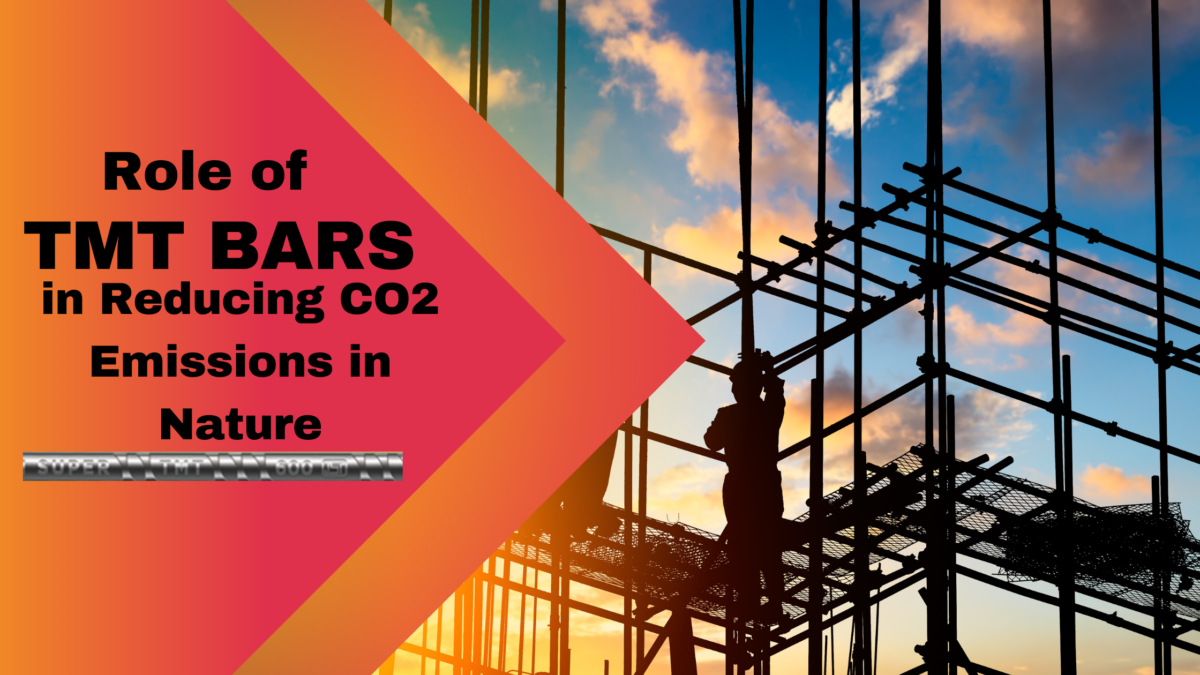In recent years, there has been growing concern about the impact of human activities on the environment, particularly about the increasing levels of carbon dioxide (CO2) emissions. As the construction industry plays a significant role in global CO2 emissions, it becomes crucial to explore sustainable solutions within this sector. One such solution lies in the use of TMT (Thermo-Mechanically Treated) bars, which not only enhance the strength and durability of structures but also contribute to reducing CO2 emissions.
In this blog, we will delve into the role of TMT bars in reducing CO2 emissions in nature.
Understanding CO2 Emissions In The Construction Industry
Before we discuss the role of TMT bars, it is essential to comprehend the source of CO2 emissions in the construction industry. The production of cement, a primary component of concrete, accounts for a significant portion of carbon emissions due to the release of CO2 during the calcination process. Additionally, the transportation of construction materials and the energy consumed during the construction phase contribute to CO2 emissions. Therefore, finding sustainable alternatives within the construction sector is paramount to mitigate the environmental impact.
Contribution Of TMT Bars In Reducing CO2 Emissions In Nature
Several TMT steel bars wholesale dealers recommend TMT bars to make your construction work stronger and earthquake resistant. But apart from strength and ductility, TMT bars play an important role in reducing the amount of carbon emission in nature.
Resource Efficiency:
TMT bars are manufactured using a special thermo-mechanical treatment process that involves rapid cooling of hot-rolled steel bars, imparting them with enhanced strength and ductility. This process eliminates the need for additional strengthening materials, such as structural steel sections or concrete reinforcement, which require energy-intensive production processes and result in substantial CO2 emissions. By using TMT bars, construction projects can significantly reduce the overall carbon footprint.
Structural Efficiency:
TMT bars possess exceptional strength and ductility, enabling the construction of more efficient and durable structures. Their high-yield strength reduces overall steel requirements in construction projects. By optimising TMT bars and using fewer materials, the carbon emissions associated with steel production can be significantly minimised.
Longevity And Durability:
TMT bars are corrosion-resistant and have excellent fatigue properties, ensuring the longevity and durability of structures. As a result, buildings constructed with TMT bars require minimal maintenance and repair over their lifespan. This reduces the need for additional construction work, thus minimizing the associated CO2 emissions. Furthermore, the longer service life of structures made with TMT bars reduces the demand for new construction, curbing CO2 emissions related to new building projects.
Lightweight Construction:
TMT bars are lighter in weight compared to traditional steel bars, making them easier to transport and handle. Several TMT steel bars wholesale dealers suggest TMT bars for their lightweight nature. This characteristic leads to reduced energy consumption during transportation and lowers CO2 emissions associated with logistics. Moreover, the lightweight nature of TMT bars allows for the use of lighter structural elements in buildings, resulting in less material consumption and subsequent reductions in CO2 emissions.
Recycling And Reusability:
Several TMT bar manufacturers recycle old TMT bars at the end of their lifespan. Recycling steel requires significantly less energy compared to the primary steel production process, leading to substantial reductions in CO2 emissions. Moreover, recycled TMT bars can be used in the construction of new structures, promoting a circular economy and further minimizing environmental impact.
Wrapping It Up
As the world becomes increasingly aware of the urgent need to reduce CO2 emissions, the construction industry must play a proactive role in adopting sustainable practices. TMT bars offer a promising solution by significantly reducing carbon footprints throughout the construction process. From resource efficiency and lightweight construction to structural optimization and recyclability, the environmental benefits of TMT bars are evident.
By embracing the role of TMT bars in reducing CO2 emissions, we can create a more sustainable and environmentally friendly construction industry. Each step taken towards greener practices brings us closer to a future where construction contributes to the well-being of both people and the planet. Let us build a world where sustainable construction is the norm and where nature thrives alongside our structures.


